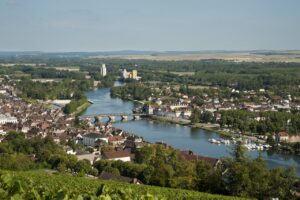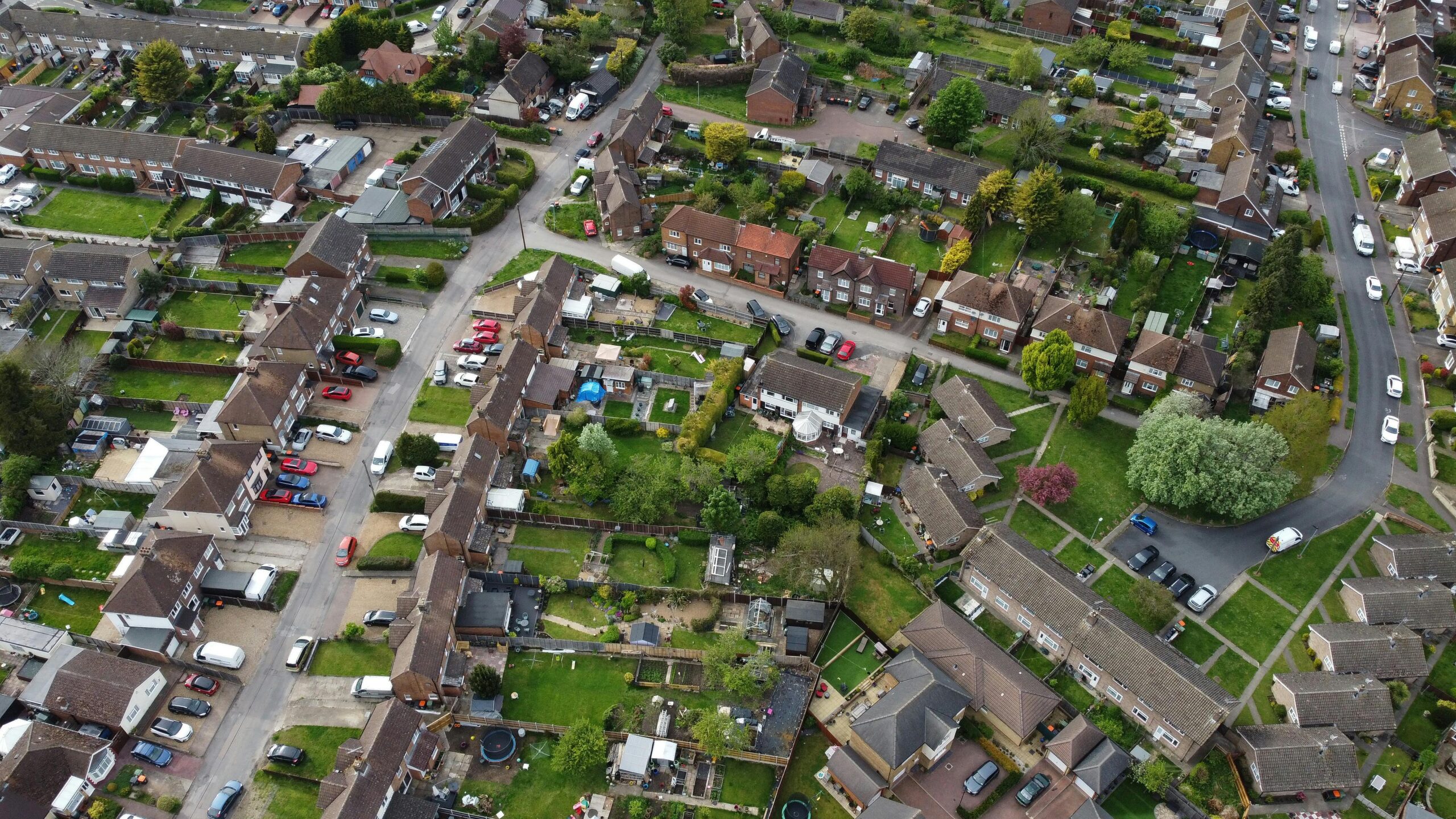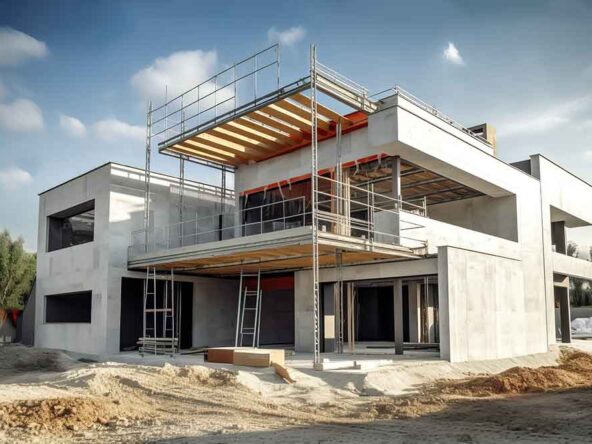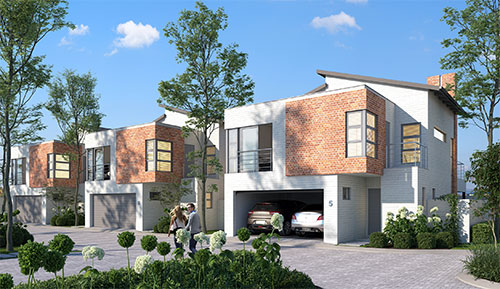Do you have a dream of becoming a property developer? Then understanding the subdivision process can unlock your property development goals.
This article aims to give you a detailed guide on the subdivision process and how it helps you in your property development journey.
Topics covered include the subdivision process, the significance of Regulation 38, considerations of timing, associated costs, and other essential aspects critical to comprehending and successfully executing your property development projects.
What Is A Subdivision?
So, you find a large land parcel or a house built on a large piece of land and your mind starts thinking about the idea of breaking the land into multiple smaller plots and selling off each one to make a profit.
This is called Subdivision.
In a nutshell, subdivision refers to the process of dividing (or subdividing) a larger parcel of land (Erf) into smaller individual lots or plots (Erven).
The goal of property subdivision is to create separate and distinct legal titles for each of the divided portions. This process allows for the development of multiple properties on what was originally a single piece of land.
This is either achieved through the subdivision of a single Erf into another or by the creation of many new erven (Properties), through a process called Township Establishment.

The Subdivision Process And It Starts?
Town Planning is governed by the Spatial Planning & Land Use Management Act No, 16 of 2013 (SPLUMA).
SPLUMA sets up a national framework for spatial planning and land use management and directs municipalities to determine the procedures relative to the approval of a land development application.
SPLUMA empowers local municipalities throughout South Africa to make decisions on such land development applications.
All properties in South Africa are zoned for a specific use.
The zoning of a property dictates how the property may be used and developed.
Hypothetically It is important to understand that a property in Johannesburg zoned exactly the same as one in Cape Town or Durban may be divided and used differently from the one in Cape Town or Durban.
This is because of the different Town Planning Schemes applicable to these areas as well as the different development frameworks drawn up by their respective Municipality.
It is crucial that an owner or prospective developer appoints a Registered Professional Town Planner, which can be found on the South African Council of Planners (SACPLAN) website.
At a very high level, the subdivision process begins with a developer appointing a townplanner.
Here’s how that might look….
The Starting Point: Where to begin?
Step 1: Site Analysis And Feasibility
A Town Planner is appointed by the owner or developer of the property to undertake a due diligence (ie. feasibility) report to determine whether a subdivision is permissible on the said property.
The feasibility normally takes the following into account:
- Dig into the details: Investigate the zoning regulations, title deed restrictions, and current land use.
- Environmental scan: Conduct surveys to assess topography, vegetation, and potential environmental concerns.
- Consult the experts: Work alongside surveyors, engineers, and other consultants to evaluate feasibility and potential challenges.
In some cases the property might have to be rezoned to a zoning that will accommodate the development of new smaller land parcels.
Step 2: Design And Planning
The townplanner then begins planning the subdivision, which could include the following:
- Vision comes to life: Translate the developer’s vision into a preliminary design, considering plot sizes, access roads, and infrastructure needs.
- Compliance is key: Ensure the design adheres to all zoning, environmental, and accessibility regulations.
- Community engagement: Depending on the project scale, facilitate public participation meetings to address community concerns and gather feedback.
Step 3: Application And Approvals
The Town Planner, then rights up a development application to the respective municipality requesting the property to be rezoned, subdivided or both.
This part of the process may take the following shape:
- Prepare the paperwork: Compile a comprehensive application package with detailed plans, surveys, technical reports, and environmental impact assessments.
- Navigating the bureaucracy: Submit the application to the municipality and potentially other relevant authorities like water and sanitation departments.
- Negotiate and advocate: Work with authorities to address any concerns, clarify requirements, and secure necessary approvals.
Step 4: Technical Procedures & Implementation
The Town Planner then works with a surveyor to draw up a sub-divisional plan for the new land parcels.
Here’s how this part of the process works:
- Teamwork: The townplanner collaborates with surveyors to precisely demarcate plot boundaries.
- Legal: Prepare new title deeds for each plot and facilitate registration with the Deeds Office with the help of legal experts.
- Infrastructure development: Oversee the construction of roads, utilities, and any planned amenities (parks, playgrounds, etc.).
Step 5: Completion & Handover
This is the final step of the process.
- Final inspections: Once everything is built and meets regulations, coordinate final inspections with relevant authorities.
- Handover to the developer: With approvals and inspections complete, the professionals will officially hand over the subdivided land to the developer, ready for marketing and sale.
Townhouse/Cluster Development

In recent times property development has focused on higher densities (more housing units) as compared to your single residential dwellings have emerged as a sought-after and effective approach to housing, striking a harmonious balance between shared communal living and individual private spaces.
How?
Owners and property developers normally acquire larger pieces of land to cater for these developments.
These properties are generally zoned for single residential homes or in some instances have an agricultural zoning aspect to it.
A Town Planner is appointed by the owner or developer to undertake a Land Development Application or commonly known as a Rezoning application.
This involves changing the land use allowed on the property from a traditional single residential home to more of a cluster or townhouse residential use.
What to consider?
It is important to note, that not all property in South Africa can be rezoned to accommodate Townhouses/ Cluster Developments.
As earlier discussed, the Town Planning Schemes play a vital role in determining if a rezoning can be achieved.
All municipalities are mandated to develop a Spatial Development Framework for their jurisdiction/region.
This framework works as a guide to growth and development of a particular municipality.
It aims to provide a “footprint” to where development is heading and also a guide to the provision and development of Engineering Services.
More on this is found under the SPLUMA certificate.
“A SPLUMA certificate is issued by the local municipality and confirms that any improvements or additions made to the property have been approved in accordance with local bylaws.”
How much does it cost?
It is important that the owner and developer seeks qualified expertise and advice from a Townplanner when planning a subdivision.
A Town Planner is vital to the entire process and forms a link between the developers and the municipality.
Cost for a subdivision can range between R75 000 to over R300 000 depending on the scale of the development as well as specialist studies that might be required.

How Long Does It Take?
A Rezoning or Subdivision can range between 12- 18 Months to get an approval from the various authorities.
It is vital to ensure before submission of a Rezoning Application, that a Pre- Application process is undertaken with the municipality to ensure a smooth application process is followed.
Are We Ready To Sell?
According to SPLUMA Section 53 … “the registration of any property resulting from a land development application may not be performed unless the municipality certifies that all the requirements and conditions for the approval have been complied with. “
SPLUMA empower municipalities to determine their own procedures in terms of a Land Development Application.
Although a SPLUMA Certificate is required in terms of the provisions of SPLUMA, the specific conditions and requirements to be met in order for such a certificate to be issued by a municipality are set out in the particular municipality’s by laws.
Such conditions can relate to issues around the provisions of Bulk Service (water, sewer etc).
By way of example, we will look at the relevant provisions of the City Of Johannesburg (COJ) By Law which requires certain certificates to be issued by the COJ and/or written consent to be obtained from the COJ in respect of the transfer of the following New Erven –
• Permission To Issue A CRT: certificate that permits the issuing of a certificate of registered title (CRT) in respect of a New Erf in a new township – (section 29(1)(d) of the COJ By Law);
• a New Erf resulting from a subdivision of another erf: (section 33(1)(a) read together with section 34(5) of the COJ By Law);
• a New Erf resulting from the consolidation of two or more erven: (section 33(1)(b) read together with section 34(6) of the COJ By Law); and
• the registration of a sectional title scheme on any property (section 53 of the COJ By Law).
The abovementioned provisions of the COJ By Law restrict the powers of the Registrar of Deeds (“Registrar“) to register a new title deed (certificate of registered title or a certificate of consolidated title) or a deed of transfer in respect of a New Erf.
Unless the municipality has certified that certain requirements and conditions stipulated by the municipality have been complied with.
In conclusion, subdivisions are a great tool in property investment and development.
However if you don’t have a good team around you, your project will never get off the ground.
Happy investing aspiring Property Developers.

Nashlan founded Town Planning Zone in 2023, drawing from extensive experience in Town Planning and Development.
With close to a decade of experience as a Professional Town Planner in both Public & Private sector,
As of 2023, Nashlan has been awarded as one of 30 Top Young Planning Professionals in South Africa, by the South African Council of Planners (SACPLAN)





